|
|
|
|
|
|
|
|
|
|
||||||||||
|
|
||||||||||
|
|
Background
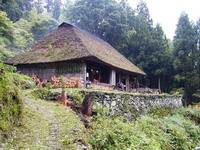
In 1971 I first discovered Iya 祖谷 Valley, a remote mountainous region in Tokushima Prefecture 徳島県 in the center of Shikoku. The Iya gorges 祖谷峡 are Japan's deepest, sometimes called "Japan's Grand Canyon," . Iya is so secluded that over the centuries refugees from Japan's civil wars fled into Iya and settled there, notably the Heike survivors from the Genji/Heike wars of the 12th century. Even now Iya people speak a dialect with traces of ancient Heian court language.
Having fallen in love with Iya, I started looking for a house (in those days the village was full of abandoned houses), and in 1973 I bought an old thatched farmhouse in the hamlet of Tsurui 釣井, in East Iya 東祖谷. Dating from around 1720, the house is typical of old Iya construction: with wooden floors, irori 囲炉裏 (floor hearths), and massive beams and rafters – all smoked black from centuries of fires burning in the floor hearths.
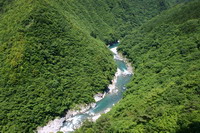
Chiiori
I named the house Chiiori 篪庵 , which means "House of the Flute." For the first few decades, my friends and I lived quietly in the house, and we succeeded in re-thatching the roof in the late 1980s.
In 1999, a group of us got together and founded the "Chiiori Project," dedicated to reinvigorating Iya with sustainable tourism, organic agriculture, and giving visitors and volunteers an experience of nature and traditional village life. Since then numerous volunteers from many countries have lived at Chiiori, and the house has hosted hundreds of visitors from all over Japan and the world.
In 2005, Chiiori Project was officially registered as a NPO (non-profit organization) with Tokushima Prefecture.

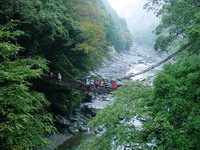
Chiiori Trust
In spring of 2007 the "Chiiori Project" was ready for a new start. Japan is entering a new phase of environmental awareness. Meanwhile, Iya itself is transforming, having merged with several nearby towns and villages to become part of Miyoshi City 三好市. At last the time has come to implement, on a broader scale, and with real impact, the original dreams and goals dating back to 1973.
In June 2007, we re-organized and expanded the board of Chiiori Project, and changed the name of the NPO to the Chiiori Trust. We closed down for a few months, and raised funds from events, donors, and visitors, for extensive work on the house, which was run-down and needed cleaning and repair.
In November 2007, a new Chiiori is re-opening, managed now by the revived and revitalized Chiiori Trust.
We are now making preparations for a re-thatching of Chiiori's roof, which we aim to complete in 2012. In the meantime, we are working with Miyoshi City to develop sustainable tourist resources in our hamlet of Tsurui and other hamlets as well.
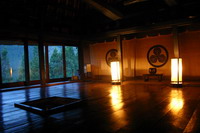
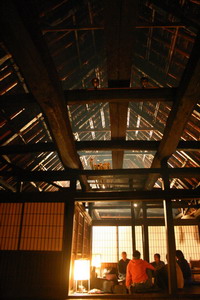
Volunteers
We actively seek volunteers who would like to live at Chiiori and experience Iya's ancient village life-style, now largely lost in the rest of the Japan. At the same time volunteers will be contributing to a ground-breaking model of sustainable development – which hopefully will influence rural regions across Japan.
For more about the story of the finding of the house and life in Iya in the 1970's, see the first two chapters of Lost Japan:
For media about Iya, please see:
Media about Iya and Chiiori
|
|


